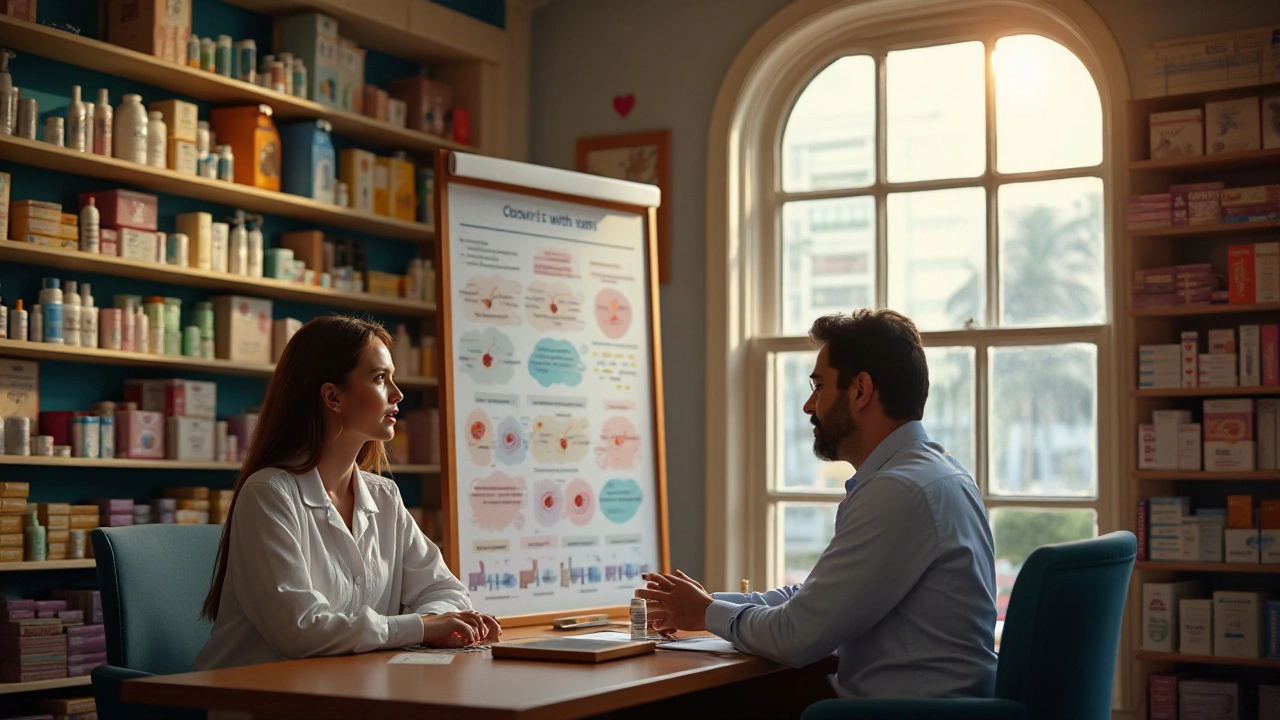If you’re worried about Isotroin (oral isotretinoin) side effects, or your doctor says it’s not right for you, you still have solid options. Severity of acne, pregnancy plans, and side effect tolerance guide the choice. Below I’ll walk through realistic alternatives and what you can expect from each.
If your acne is mild to moderate, topical treatments are often enough. For women with hormonal acne or for people who can’t take isotretinoin due to liver issues, pregnancy risk, or mental health concerns, other routes work better. If you have severe cystic acne and want long-term clearing, talk to a dermatologist—sometimes low-dose isotretinoin or a combined plan is recommended instead of stopping treatment completely.
Topical retinoids: Adapalene and tretinoin reduce clogged pores and inflammation. They take 8–12 weeks to show steady improvement. Use a gentle cleanser and moisturizer—retinoids can dry and irritate skin at first.
Benzoyl peroxide & salicylic acid: These over-the-counter options work well for mild acne. Benzoyl peroxide kills bacteria and helps reduce inflammation; salicylic acid helps unclog pores. Rotate or combine them carefully to avoid irritation (for example, benzoyl peroxide in the morning and a retinoid at night).
Oral antibiotics: Doxycycline and minocycline treat moderate inflammatory acne by reducing bacteria and inflammation. They often help within 6–12 weeks. Long-term use isn’t ideal because of resistance; they’re usually paired with topicals and a clear exit plan.
Hormonal options (for people who can take them): Combined oral contraceptives and spironolactone reduce androgen-driven oil production, which helps many women with breakouts along the lower face and jawline. Results typically appear after 3 months. Spironolactone requires blood pressure and potassium monitoring in some cases.
Procedures: Chemical peels, light therapy, and certain laser treatments can reduce acne and scarring. They’re best when used with medical therapies—not usually a solo long-term fix. Expect multiple sessions and temporary redness.
Non-drug approaches: Gentle skincare, avoiding heavy creams and comedogenic products, using noncomedogenic sunscreens, and a consistent routine make medical treatments work better. Diet changes (reducing high-glycemic foods and dairy if you notice a link) can help some people, though effects vary.
Safety and timing: If you might become pregnant, isotretinoin is off the table—alternatives like topical retinoids are also limited during pregnancy. Always discuss plans and possible side effects with your prescriber. For most alternatives, expect 6–12 weeks before judging effectiveness; don’t switch too fast.
Want a plan that fits your life? Ask a dermatologist about combining treatments (for example, a topical retinoid plus hormonal therapy) to get faster, steadier results with fewer risks than high-dose isotretinoin. If you’d like, I can help list options based on your acne severity and any health concerns you have.

Navigating the realm of acne treatment options can be overwhelming, especially when seeking alternatives to Isotroin. This article examines eight potential choices, such as topical retinoids and antibiotics, providing insights into their benefits and drawbacks. From hormonal treatments to innovative lasers, each option offers unique advantages for addressing different types of acne. Learn about their effectiveness, side effects, and practicality in order to make informed decisions for a personalized skincare regime.
More